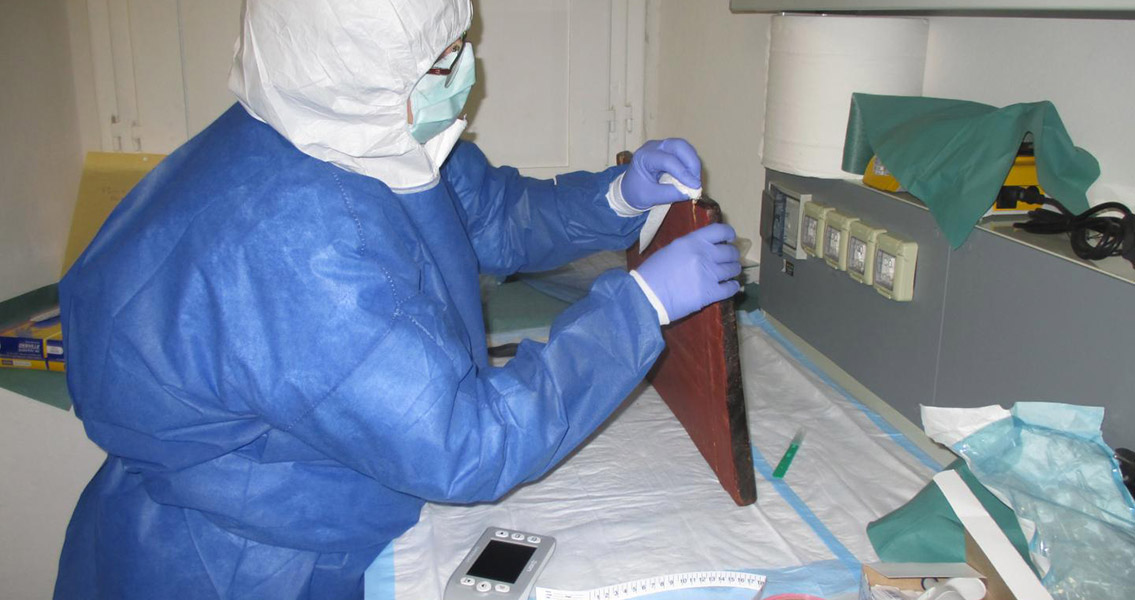<![CDATA[He was the defining figure of the Renaissance, an artist, scientist and inventor who is widely credited with helping lead Europe out of the Dark Ages. Now, a multi-disciplinary group of specialists from a host of universities hope to provide even greater insight into the life of Leonardo Da Vinci by, among other things, analysing his DNA. One of the project's many aims is to verify Da Vinci's final resting place. His remains are presumed to be located in the chapel Saint-Hubert at the Château d'Amboise in France, but this has never been confirmed. The team hope to answer this question through DNA analyses, if permission is granted to examine the remains. A study of the remains at the chapel of Saint-Hubert will be just a small part of a much bigger DNA analysis, however. The team hopes to compare samples from Da Vinci's relatives, both past and present, with physical remnants such as hair, bones and skin cells associated with the Renaissance figure. A scholar involved in the project has already successfully identified several of Da Vinci's living relatives. Providing a positive identification is made of the remains in France, one goal of the project is to use computerised techniques to construct an image of Da Vinci's face from models of his skull. Details of his ancestors and family history could also be traced. The Leonardo's Project's aims, motives and methods have recently been detailed in the Journal of Human Evolution. The Project’s team comprises anthropologists, art historians, genealogists and microbiologists from a host of leading Universities in Europe and North America, as well as specialists from the J. Craig Venter Institute of California, the institution responsible for mapping the human genome. A comprehensive image of Da Vinci’s life could be produced by the time the study is completed. In particular, analysis of the remains could allow insights into his lifestyle; his state of health, diet, personal habits and even the places he lived and stayed in. Brunetto Chiarelli of the International Institute for Humankind Studies and editor of the Journal of Human Evolution, underlined just how revelatory the team’s research could be. “Matching Leonardo’s DNA to that of his family presents puzzles that are minutely specific to their history and circumstances, but the tools the investigators use are generic and broadly applicable.” Chiarelli said, in a press release from the journal. “We stand to gain not only greater historical knowledge of Leonardo but possibly a reconstruction of his genetic profile, which could provide insights into other individuals with remarkable qualities.” For the art world in general, the techniques being explored and developed by the team could have a revolutionary impact, capable of detecting multi-million dollar forgeries. One of their aims is to see if Da Vinci’s DNA can be extracted from his artworks. For instance, members of the team are in discussion with the Florentine laboratory currently restoring Da Vinci’s ‘Adoration of the Magi’ about the possibility of removing dust from the painting and studying it for signs of Da Vinci’s DNA. If it turns out an artist’s DNA can be extracted from artwork, it would prove a game changer in verifying a piece’s authenticity. The researchers aim to finish their ambitious project by 2019, to coincide with the 500th anniversary of Da Vinci’s death. Recent multi-disciplinary anthropological studies have provided remarkable insights into the lives of Richard III and the Spanish author Cervantes. The new study has the potential to do the same for Leonardo Da Vinci. For more information: The Leonardo Project: Special Issue]]>
Groundbreaking New Study Launched into Da Vinci's DNA
